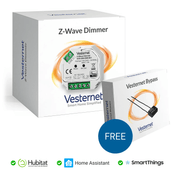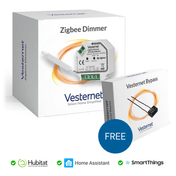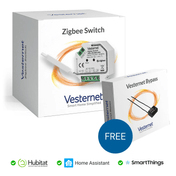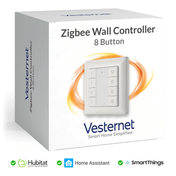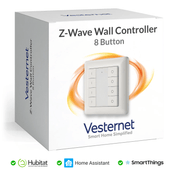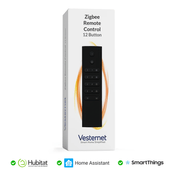The remote working revolution has fundamentally changed how we approach home office design and functionality, with professionals needing sophisticated workspace environments that rival traditional corporate settings while maintaining the flexibility and comfort of home. Modern remote workers demand more than just a desk and laptop – they require environments that actively support productivity, comfort, and professional presentation.
Smart home automation technology provides comprehensive solutions for transforming any space into a productive, efficient, and comfortable remote working environment through intelligent lighting control, air quality management, and seamless device integration. This home office update goes beyond simple gadgets to create intelligent workspaces that respond dynamically to your needs throughout the workday.
This comprehensive guide explores the essential components of workspace automation, from basic smart controls to advanced productivity enhancement systems, helping readers create the ideal automated home office setup that evolves with changing work demands.
Understanding Smart Home Office Automation Fundamentals
Smart home office automation represents a sophisticated approach to workspace management that extends far beyond basic connectivity. Unlike residential automation focused primarily on comfort and convenience, workspace automation prioritises productivity, professional functionality, and seamless workflow support through intelligent device coordination.
Core Components of Workspace Automation
- Environmental control systems that maintain optimal temperature, humidity, and air quality
- Intelligent lighting solutions that adapt to tasks and video call requirements
- Automated equipment management for printers, monitors, and charging stations
- Security and access control for confidential work and visitor management

The distinction between basic and advanced automation systems lies in their ability to create contextual responses to work patterns. While basic systems respond to simple commands or schedules, advanced workspace automation learns from user behaviour and creates predictive responses that enhance productivity without requiring constant manual intervention.
Essential Smart Controls for Remote Working Success
Building an effective automated home office begins with fundamental smart controls that provide reliable equipment management and seamless device coordination. These foundational elements create the infrastructure necessary for more sophisticated automation whilst delivering immediate productivity benefits.
Smart plugs serve as the backbone of equipment automation, enabling remote control and scheduling of essential office devices including printers, desk lamps, monitors, and charging stations. By grouping equipment into logical zones, remote workers can activate entire workstations with single commands or automatically power down non-essential devices during breaks.
Essential Control Categories
- Wireless controllers for instant scene changes and meeting preparation
- Gateway hubs that unify different device protocols into cohesive systems
- Smart sensors for occupancy detection and environmental monitoring

Remote control solutions extend beyond simple on/off functionality to encompass complex scene management that coordinates multiple devices simultaneously. Professional home automation companies increasingly focus on creating intuitive control interfaces that minimise disruption to work flow whilst maximising functionality.
Optimizing Lighting and Ambiance for Productivity
Intelligent lighting represents one of the most impactful workspace automation investments, directly influencing focus, energy levels, and professional presentation during video calls. Advanced dimming solutions create dynamic lighting environments that adapt automatically to work schedules, natural light conditions, and specific task requirements.
Professional Lighting Automation Benefits
- Circadian rhythm support through colour temperature adjustments throughout the day
- Glare reduction and eye strain prevention during extended screen time
- Professional video call lighting that flatters appearance and reduces shadows
- Task-specific lighting for reading, writing, and detailed work activities
Modern smart controls enable sophisticated lighting management that responds to calendar events, weather conditions, and personal preferences. Meeting preparation sequences can automatically adjust ambient lighting for video calls, whilst deep work modes minimise distractions through subtle lighting changes that promote concentration.
Air Quality and Environmental Control Systems
Optimal working conditions require careful attention to environmental factors that directly impact cognitive performance and comfort. Smart environmental monitoring creates healthier workspaces through automated detection and response to air quality changes, temperature fluctuations, and humidity variations.
CO2 detection systems provide real-time feedback on air quality whilst triggering automated ventilation responses when concentration levels affect mental clarity. Advanced sensors monitor multiple air quality parameters simultaneously, creating comprehensive environmental profiles that inform both immediate adjustments and long-term workspace optimisation.
Environmental Control Priorities
- Automated HVAC integration for consistent temperature and air circulation
- Humidity monitoring and control to prevent equipment damage and discomfort
- Air purification activation during high pollution or pollen periods

Productivity enhancement systems increasingly incorporate environmental data into their decision-making processes, automatically adjusting workspace conditions to maintain peak cognitive performance throughout the workday whilst minimising energy consumption during non-working hours.
Motion-Based Automation for Seamless Workflow
Motion sensors transform static workspaces into responsive environments that anticipate user needs and optimise energy usage through intelligent presence detection. These systems create seamless workflow experiences by automatically activating workspace elements upon arrival whilst implementing security protocols during extended absences.
Motion Automation Applications
- Automatic workspace activation including lighting, heating, and equipment startup
- Security monitoring that activates cameras and alarms during work breaks
- Energy management that powers down unused devices and adjusts environmental systems
- Workflow optimization that prepares workspaces based on scheduled activities
Advanced motion detection systems distinguish between different types of movement and activity patterns, enabling contextual responses that support work activities without creating unnecessary distractions. Smart controls integrate motion data with calendar information to create predictive automation that enhances productivity whilst maintaining professional workspace standards.
Advanced Integration Strategies and Scene Management
Sophisticated workspace automation requires careful coordination between multiple device categories to create seamless experiences that support different work activities. Scene management systems enable instant transitions between work modes, from focused deep work sessions to collaborative video meetings, through single-command activation of multiple coordinated devices.
Custom work modes create tailored environments for specific activities, such as presentation preparation that adjusts lighting for camera work, activates recording equipment, and optimises audio settings automatically. Meeting preparation sequences coordinate multiple systems to ensure professional presentation quality whilst minimising setup time and potential technical difficulties.
Integration Strategy Components
- Multi-device coordination for simultaneous equipment activation and configuration
- Conditional logic that responds to external factors like weather or calendar events
- Voice control integration for hands-free operation during active work sessions

Leading home automation companies develop integration platforms that learn from user behaviour patterns, gradually optimising scene responses based on individual preferences and workflow requirements whilst maintaining flexibility for changing work demands.
Troubleshooting Common Home Office Automation Challenges
Reliable automation operation during critical work hours requires proactive troubleshooting strategies and systematic approaches to common connectivity and performance issues. Understanding typical failure points enables remote workers to implement preventive measures and rapid resolution protocols that minimise work disruption.
Common Challenge Categories
- Network connectivity issues affecting smart controls and remote access capabilities
- Device compatibility problems between different manufacturers and protocols
- Performance degradation during peak usage periods or system updates
- Battery management for wireless devices and sensor networks
Systematic troubleshooting approaches include maintaining device inventories with firmware version tracking, implementing network redundancy for critical systems, and establishing manual override procedures for essential equipment. Professional installation and configuration services from experienced home automation companies often provide ongoing support that prevents many common issues whilst ensuring optimal system performance.
Future-Proofing Your Smart Home Office Setup
Emerging technologies in workspace automation promise enhanced integration capabilities, improved artificial intelligence responses, and expanded compatibility between different smart device ecosystems. Understanding technology roadmaps enables informed investment decisions that provide long-term value whilst avoiding obsolescence risks.
Scalability considerations include selecting systems that accommodate workspace expansion, changing technology requirements, and evolving work patterns. Future-ready installations prioritise open protocols, regular update capabilities, and modular component architectures that support incremental upgrades rather than complete system replacements.
Future-Proofing Strategies
- Protocol selection that ensures compatibility with emerging device standards
- Modular system design that supports gradual expansion and component upgrades
- Professional consultation on technology roadmaps and upgrade pathways
Investment in quality gateway hubs and control platforms provides the foundation for long-term automation success, enabling integration of future devices whilst maintaining compatibility with existing equipment throughout technology evolution cycles.
Conclusion
Smart home office automation represents a significant investment in productivity, comfort, and professional success, offering tangible benefits including improved focus, energy efficiency, and seamless workflow management that directly impact work performance and satisfaction. The comprehensive integration of workspace automation creates professional environments that adapt dynamically to changing work requirements whilst maintaining the flexibility and comfort advantages of remote working.
Ready to explore smart automation solutions for your home office? Start with fundamental components like smart plugs for equipment control, gateway hubs for system integration, and environmental sensors for optimal working conditions, then gradually expand your setup based on specific workflow needs. This systematic approach ensures reliable performance whilst building toward more sophisticated automation capabilities over time.
Browse our comprehensive collections of smart plugs, remote controllers, lighting dimmers, motion sensors, gateway hubs, and air quality monitors to discover professional-grade automation solutions backed by expert guidance and technical support for your remote working success. Professional consultation services help identify the most effective home office update strategies tailored to individual workspace requirements and productivity goals.










